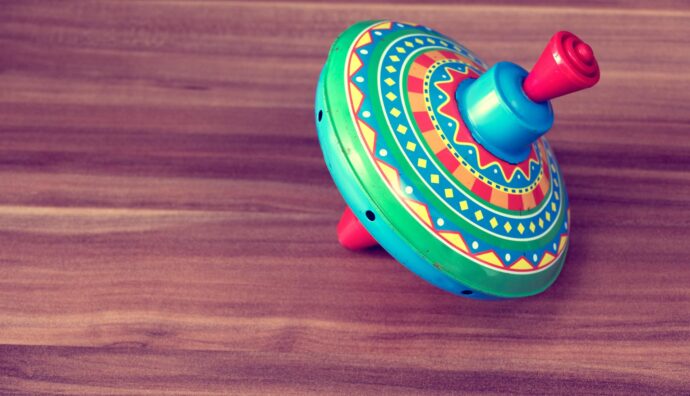Recovering the meaning of what we do every day is a goal, perhaps the highest, of a martial discipline.
The Founder of Aikido often used the term sumikiri (澄み切り). A very interesting term, because the two parts of which it is composed mean “clean cut” but the term in its entirety means “complete serenity”. And it is with this meaning that Morihei Ueshiba used it.
An “extraordinary calmness“, as his son Kisshomaru defined it, similar to the axis around which a spinning top rotates. Everything seems still, but all it takes is a bump and all the centrifugal force will radiate.
Axis, center, force, radiating. Terms that well represent the elements on which every martial discipline and in particular Aikido is based.
Such elements determine three conditions necessary for personal development.
Working on one’s center, on breathing, on grounding, on posture and on shifting one’s axis is nothing other than an awareness of who we are. Accepting who we are is the prerequisite for improving ourselves.
Working on force, on its modulation and on its appropriate use is what allows our center to interact, to manifest itself, to dialogue. Force, more than many other aspects, requires a continuous training in expressive grammar.
Finally, radiating means nothing more than having the courage to “be outside”. To accept breaking the warm shell of our comfort zone and relating our entire being to others.
These three pillars are transversal to all Martial Arts and Budo recognizes conflict as a precious tool because, through training, fighting and various forms, the individual improves.
An improvement that conceptually starts from sumikiri and tends towards a truly embodied and alive sumikiri.
It is not easy to recover this implicit meaning of martial disciplines. It’s not easy because the “self-help” industry has widely spread the concept that “you’re ok just the way you are”.
Between the serene and still center of the sumikiri and the potential disheartened immobility of those who remain still because “it’s ok as it is”, there is a huge difference.
How much frustration there is when we don’t understand an exercise, when we make a mistake, when we fail to perform a technique and our partner remains immobile or, worse, performs a counter-technique and nails us to the tatami!
Yet these are moments of truth. Blessed and rare in a daily life in which it is often the social masks that govern our actions, personal and collective.
So becoming able of directing our body, relating to others and controlling our movement and that of others becomes a constant exercise in truth and freedom.
Because, ultimately, recognizing that we are not as ok as we are, allows us to choose a path that teaches us with humble but real tools to make responsible decisions during a physical practice and opens the doors to being able to do the same, once the class is over, outside the Dojo.
Disclaimer: Picture by Anthony from Pexels

